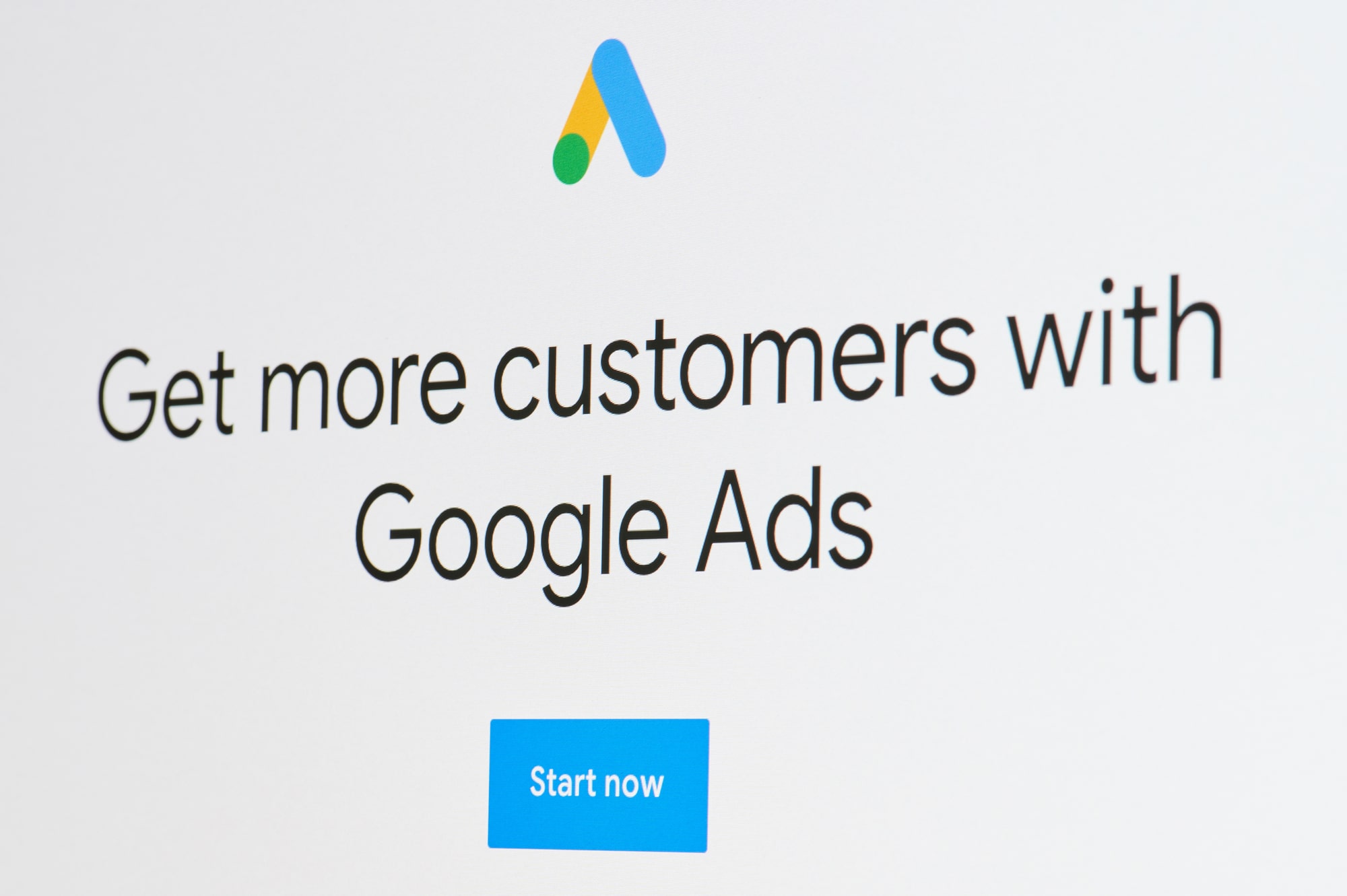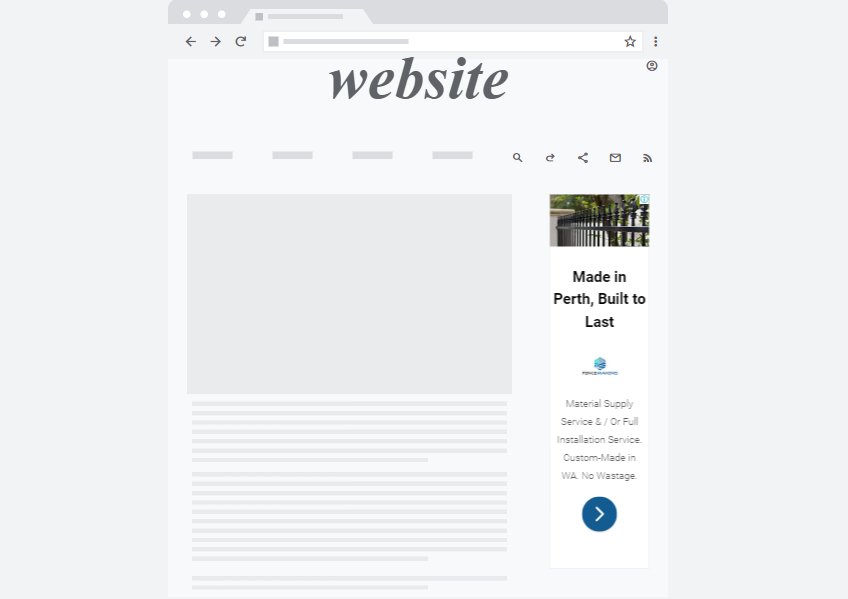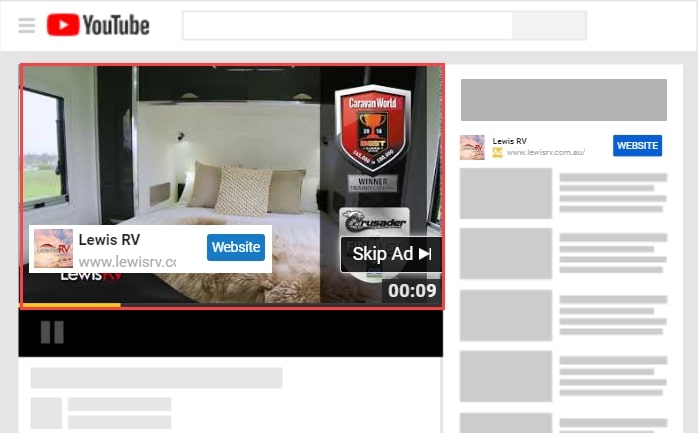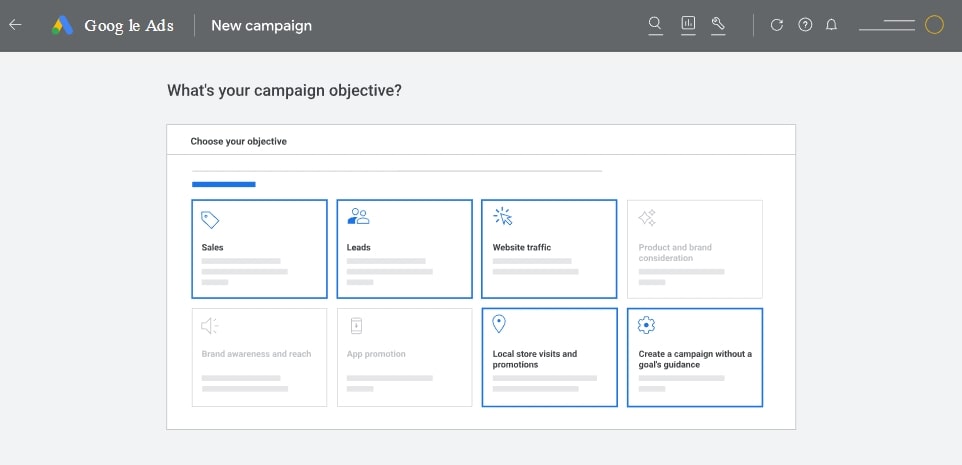
Diving into the realm of learning the types of Google Ads can seem overwhelming with so many options to choose from, but chances are that you have already come across all of these Google Ad types at one time or another.
Below you will find all eight campaign types of Google Ads, their benefits and what businesses they suit best.
Google Search Ads Campaign
The original Google Ad, these Google Search Ads are displayed as text ads at the top of Google’s search engine results page (SERP) that help you reach people who are using Google and currently searching for products and services similar to yours.
Benefits
- Increase conversions: Drives sales and leads to your site
- Relevant: Shows your ads to people currently using Google search
- Targeted: Show your ad for the exact keywords you wish to appear for
Things to note
- Competitive industries generally have a higher cost-per-click
- Headlines and descriptions need to be attention-grabbing or you may not generate interest and receive clicks
Who are they for?
Any business trying to drive qualified traffic to their site, especially ones trying to increase sales and leads.
Google Display Campaigns
Rather than the purely text-based option of Search ads, Display campaigns are image based instead. Google Display advertising is shown throughout the collection of websites on Google Display Network (GDN).
What is the Google Display Network?
A collective of more than 2 million websites that reach over 90% of internet users used to promote Google Display Campaigns. With these sites, you can target them based on particular audience segments, locations or for specific contexts (e.g. websites tailored to home improvement).

Benefits
- Brand awareness: Using display adverting can create initial interest in your products/services
- High reach: Seen by large numbers of people at a relatively low cost
- Targeting: Unlike Search campaigns, this type of Google ad can target people based on their interests, gender, age as well as remarketing based on your campaign settings
Things to note
- Lower click-through-rate (CTR)
- Adblocking tools can be used to stop users from seeing your Display ads
- While impressions will be much higher, people may not pay as much attention to this as other ad types
- Best to be used with other campaigns simultaneously, with Google Display ads being used to create awareness and other Google ad types to drive conversions
Who are they for?
Businesses looking to create awareness for their products/services as they have a high reach, and increasing awareness leads to better results with your other campaigns. Google Display Ads are also perfect to boost awareness around a new product or service release.
If your business is struggling with Search campaigns or is a niche product/service then it could be just what you need to give your marketing a boost.
Google Shopping Campaigns
Google Shopping ads are different from other Google ad campaign types as they are shown on both the Search and Shopping tabs. These shopping ads pull attributes from your product in the Google Merchant Centre, such as price, colour, quantity and more.
Benefits
- Right place, right time: With shopping ads, you can reach customers when they are looking to purchase
- Visual ads: Containing real photos of your products, these ads are more attractive than simple text ads
- Descriptive: Allows you to add product attributes, such as price, material, colour etc. into your shopping ads
Things to note
- You cannot use keyword targeting for this ad group and instead use a negative keyword list to make sure your ads are served where you want them
- You need to set up both a Google Merchant Center account and a Google Ads account to use this campaign type
- Your website will have to be e-commerce with purchasing functionality to use Google Shopping Ads
Who are they for?
Best for eCommerce site owners with the goal of increasing sales online and local shop owners who want to drive foot traffic into their stores.
Google Video Campaigns
Allowing you to use video ads on YouTube and other websites, Google Video ads can help build brand and product awareness or to drive conversions on your website.

Benefits
- Cost-effective: Video ad campaigns are often cheaper per view than other ad formats
- Great for brand awareness: Opportunity to create a memorable moment for customers with video ads
- Wide audience reach: Target customers even while they aren’t using Google search
- Retargeting: Allowing you to touch base with people who have previously viewed your ads or visited your site
Things to note
- Commonly low click-through-rate
- Factor in the cost to develop/film a video
- Your video ads will need to be uploaded to YouTube
- To get the best reach, it’s best for you to create multiple video ad formats to target horizontal, square and vertical video at a minimum
Who are they for?
Video ads are commonly good for businesses; releasing a new product offering, boosting brand awareness, and promoting in-store visits.
Google Smart Campaigns
Google Smart campaigns are seen as the easiest ad campaign to set up and get running. With your business information and a couple of ad examples, Google’s machine learning will automate to find the best targeting across Search, Maps, YouTube and partner sites.
Benefits
- Easy: Provide some simple bits of information for Google and they will get to work with your ads across their network
Things to note
- This is quite a basic campaign and provides limited control
- Due to the lack of control, Google’s algorithm will cause a lot of trial and error
Who are they for?
Smart campaigns are good for business owners who are time-poor and do not have the resources to manage their accounts effectively.
Google Performance Max Campaigns
Yet another type of automated campaign, but this one differs from other Google ads by being goal based and allows businesses to access both the Search and Display network from a single campaign. This will put your business’ ads across all of Google’s channels.
Google’s algorithm will optimise your campaign automatically in reference to your specific conversion goals in your campaign settings across bidding, your audience, attribution, budget optimisation and much more.

Benefits
- Performance-based: Can specify your goals and Google’s algorithm will adjust your ads automatically to meet them
- Gather insights: The feedback from the campaign performance will let you see what is most impacting performance and allows you to optimise your creative to drive better results
Things to note
- This is relatively new and has seen mixed results so far
- A higher marketing budget is needed than other campaign types
- Performance Max campaigns need a decent amount of data to optimise out of its learning period, so fast results aren’t expected
- Businesses will need a large number of assets to get set up, including text, images, logos, videos, audience data, geotargeting preferences and more
Who are they for?
As long as you have a specific goal you can use in the campaign, this can work for your business. Results so far have found that this Google ad type may be more suited to eCommerce rather than lead-gen businesses.
Google App Campaigns
Google App campaigns drive installs of your app for new users and increase sales within your app. App campaigns use the information they can pull from your existing app to optimise your app ad campaign automatically across Search, YouTube, Google Play and Google Display Network.

Benefits
- Promotion: Drive downloads and signups for your mobile app
- Automated: Set up ads to automate targeting, bidding and ad creation
- Visual: Uses images across ads that make the ads stand out from a standard Search Ad
Things to note
- Does not allow traditional keyword targeting
- You won’t be able to control where your ads are placed
- Your local App developer may need to assist to set up comprehensive tracking
Who are they for?
Google App Campaigns can only be used by businesses that have an app.
Google Discovery Campaigns
Another one of Google’s automated ad campaigns, Google Discovery ads show your ads across feed placements such as Gmail, YouTube and the Google app to increase the discovery of your product/service.

Benefits
- Increased Reach: Built to reach new audiences, this campaign’s intent is to build brand awareness
- Retargeting: Option to follow up and show people your ads who have visited your website or viewed your app previously
Things to note
- Due to the automated nature of this campaign, you will have less manual control – this can be both good or bad depending if your business needs a lot of oversight into its ad presence online
Who are they for?
Any business that is looking to reach new customers and build brand awareness who aren’t looking to have a large amount of control over where the ads are placed.
So what types of Google Ads should your business use?
This depends on your key goals (whether its to drive store traffic, awareness, sales or something else) and this will inform what ad types are best for you to use. If you’re unsure, reach out to our team to discuss your options.




